
Key Changes in the 2018 International Codes® (I-Codes®)
What’s New in the 2018 I-Codes?
Key changes include:
2018 International Building Code® (IBC®)
Accessory storage spaces of any size are now permitted to be classified as part of the occupancy to which they are accessory.
- New code sections have been introduced addressing medical gas systems and higher education laboratories.
- Use of fire walls to create separate buildings is now limited to only the determination of permissible types of construction based on allowable building area and height.
- Where an elevator hoistway door opens into a fire-resistance-rated corridor, the opening must be protected in a manner to address smoke intrusion into the hoistway.
- The occupant load factor for business uses has been revised to one occupant per 150 square feet.
- Live loads on decks and balconies increase the deck live load to one and one-half times the live load of the area served.
- The minimum lateral load that fire walls are required to resist is five pounds per square foot.
- Wind speed maps updated, including maps for the state of Hawaii. Terminology describing wind speeds has changed again with ultimate design wind speeds now called basic design wind speeds.
- Site soil coefficients now correspond to the newest generation of ground motion attenuation equations (seismic values).
- Five-foot tall wood trusses requiring permanent bracing must have a periodic special inspection to verify that the required bracing has been installed.
- New alternative fastener schedule for construction of mechanically laminated decking is added giving equivalent power-driven fasteners for the 20-penny nail.
- Solid sawn lumber header and girder spans for the exterior bearing walls reduce span lengths to allow #2 Southern Pine design values.
2018 International Residential Code® for One- and Two-Family Dwellings (IRC®)
An updated seismic map reflects the most conservative Seismic Design Category (SDC) based on any soil type and a new map reflects less conservative SDCs when Site Class A, B or D is applicable.
- The townhouse separation provisions now include options for using two separate fire-resistant-rated walls or a common wall.
- An emergency escape and rescue opening is no longer required in basement sleeping rooms where the dwelling has an automatic fire sprinkler system and the basement has a second means of egress or an emergency escape opening.
- The exemption for interconnection of smoke alarms in existing areas has been deleted.
- New girder/header tables have been revised to incorporate the use of #2 Southern Pine in lieu of #1 Southern Pine.
- New tables address alternative wood stud heights and the required number of full height studs in high wind areas.
2018 International Fire Code® (IFC®)
New provisions address hazards related to outdoor pallet storage, higher education laboratories, mobile food trucks and plant processing and extraction activities.
- Mass Notification Requirements for college and university buildings have been added to the code.
- Sprinkler protection is now required in existing Group A-2 occupancies having an occupant load of 300 or more where alcoholic beverages are consumed.
- A new chapter has been added to address issues related to Energy Systems.
- Integrated testing requirements for fire protection and life safety systems have been added for high rise buildings and smoke control systems.
- The requirements for gas detection systems have been revised throughout the code to be more reflective of industry practice.
- Required sprinkler protection of Group E occupancies has been expanded through the introduction of a new thresholds related to fire areas.
- Manual fire alarm systems in Group A occupancies are now required not only when the occupant load is 300 or more but also where the occupant load exceeds 100 above or below the lowest level of exit discharge.
- A manual fire alarm system and an automatic smoke detection system are no longer required in Group R-4 occupancies.
- New provisions require illumination for the exit discharge path of travel to the public way or to a safe dispersal area for all occupancies.
- Provisions have been added to address the hazards associated with outdoor assembly events, indoor trade shows and exhibitions.
- The fire watch requirements for construction and demolition activities have been enhanced.
- The provisions for the maintenance of fire and smoke protection features in Chapter 7 have been enhanced and reorganized.
- The applicability of the decorative materials requirements in Chapter 8 have been clarified.
2018 International Plumbing Code® (IPC®)
Updated table for the Minimum Number of Required Plumbing Fixtures
- Single-user toilet facilities (a room having a single water closet and a single lavatory) are not required to be labeled for use by only a male or female (separated use designations).
- Solar thermal water heating systems need to conform to the ICC 900/SRCC 300 standard.
- Well systems are required to comply with standard NGWA-01 where local requirements do not cover subject matter or are lacking in detail on others.
2018 International Mechanical Code® (IMC®)
Added coverage of pollution control units.
- A new exception was added to recognize Type I kitchen hoods listed for clearances to combustibles of less than 18 inches.
- Added coverage for a newer type of non-metallic duct, phenolic duct.
- New coverage for high volume large diameter fans (HVLD), also referred to as high volume low speed (HVLS) fans.
- Relaxed requirements for sealing of duct joints and seams for Snap- and Button-lock duct joints located within the thermal envelope.
2018 International Fuel Gas Code® (IFGC®)
A new Section was added to recognize arc-resistant CSST products.
- The code now allows Schedule 10 steel pipe to be used, whereas previously, Schedule 40 was the lightest steel pipe material allowed. Schedule 10 steel pipe joints are allowed to be welded, brazed, flanged or assembled with press-connect fittings. Schedule 10 pipe cannot be threaded.
- The code clarifies that appliance shutoff valves located behind movable appliances, such as ranges and clothes dryers, are considered to be provided with the required access.
- The code now calls for the plastic vent pipe material to be labeled as complying with the standards for the specific pipe material as called out by the manufacturer.
- The clearances between direct-vent appliance vent terminals and openings in the building exterior that could allow combustion products to enter the building have been revised.
2018 International Energy Conservation Code® (IECC®)
Revisions to interior and exterior lighting power budgets and better clarity for lighting controls.
- Clarity that regardless of design methodology, system commissioning is required.
- New limits on heated or cooled vestibules.
- Mechanical provisions reorganized based on equipment type rather than design methodology.
- The maximum allowable fenestration U-factors in Table R402.1.2 (for the prescriptive compliance path) for climates zones 3 through 8 have been reduced from the values in the 2015 edition.
- The ICC/RESNET 380 standard has been included as one of standards that can be used for determining the air leakage rate of a building or dwelling unit.
- The Energy Rating Index compliance alternative index values have been increased slightly however, the method for determining an index is now required to be in accordance with standard ICC/RESNET 301.
2018 International Existing Building Code® (IEBC®)
Section 410 Accessibility has been relocated to a new Section 305. Chapters 4, 5, 6, 13 and 14 have been relocated resulting in a reorganization and new chapter numbering.
- Requirements for live loads from Chapters 4 and 8 have been combined and placed in Chapter 3 to apply for all compliance methods.
- Structural components damaged by snow events must be repaired assuming snow loads for new buildings from the IBC.
- A new exception is added for loading of existing structural elements next to an addition in buildings designed using the IRC.
- When a work area includes more than half the building in an alteration, wall anchors must be installed at the roof line along reinforced concrete and masonry walls.
- Buildings undergoing a change of occupancy shall have live, snow, wind and seismic loads checked. Design loads are based on IBC-level forces.
- When a change of occupancy occurs placing a building in a higher risk category, the seismic loads on the building must be evaluated using IBC-level forces. Access to the building must be maintained when passing through or near other buildings and structures.
- Where storm shelters are required based on IBC and ICC 500 for Group E Occupancies, any addition to such existing occupancies where the occupant load of the addition is 50 or more will trigger the construction of a storm shelter.
- Carbon Monoxide provisions have been added in the Prescriptive Method Additions, Alterations Level 2 Additions, and in Additions for I-1, I-2, I-4 and R Occupancies.
- Emergency Escape and Rescue Opening provisions related to being operational have been added to Prescriptive Compliance Method and Alterations Level 1.
- Single exit buildings and spaces under Alteration Levels 2 and 3 have been modified to be more consistent with the IBC.
- The Alterations Level 2 requirement that water for automatic fire sprinkler system be available at the floor of alteration without the need for a fire pump has been moved to Chapter 9 for Alterations Level 3 and the fire pump criterion was deleted.
2018 International Swimming Pool and Spa Code® (ISPSC®)
It was clarified that flotation tank systems for sensory deprivation therapy are not within the scope of the ISPSC.
- Hot water storage tanks are now required to be listed and labeled to a standard.
- New sections were introduced into the code to cover solar thermal water heating systems. Installation requirements refer to the IMC.

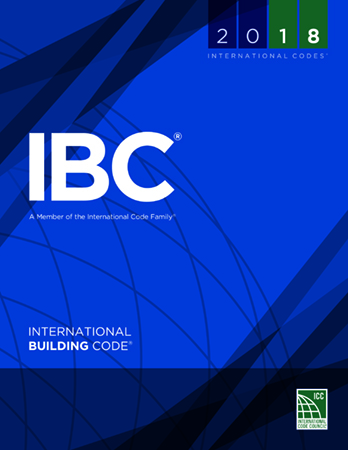 Accessory storage spaces of any size are now permitted to be classified as part of the occupancy to which they are accessory.
Accessory storage spaces of any size are now permitted to be classified as part of the occupancy to which they are accessory. An updated seismic map reflects the most conservative Seismic Design Category (SDC) based on any soil type and a new map reflects less conservative SDCs when Site Class A, B or D is applicable.
An updated seismic map reflects the most conservative Seismic Design Category (SDC) based on any soil type and a new map reflects less conservative SDCs when Site Class A, B or D is applicable.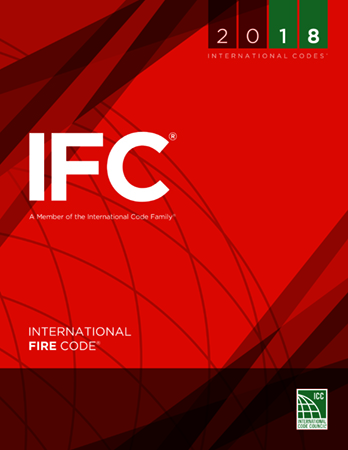 New provisions address hazards related to outdoor pallet storage, higher education laboratories, mobile food trucks and plant processing and extraction activities.
New provisions address hazards related to outdoor pallet storage, higher education laboratories, mobile food trucks and plant processing and extraction activities.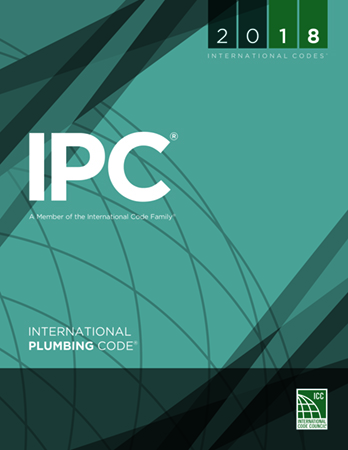 Updated table for the Minimum Number of Required Plumbing Fixtures
Updated table for the Minimum Number of Required Plumbing Fixtures Added coverage of pollution control units.
Added coverage of pollution control units.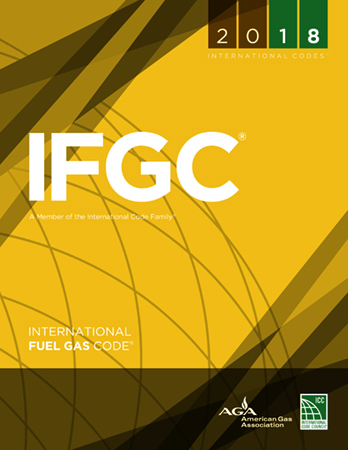 A new Section was added to recognize arc-resistant CSST products.
A new Section was added to recognize arc-resistant CSST products.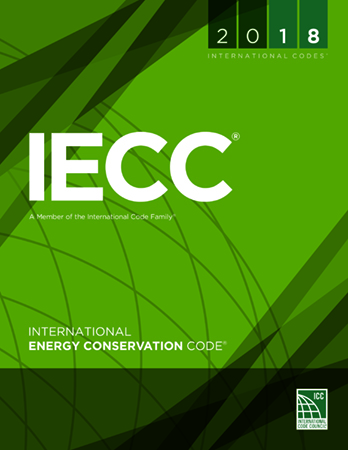 Revisions to interior and exterior lighting power budgets and better clarity for lighting controls.
Revisions to interior and exterior lighting power budgets and better clarity for lighting controls.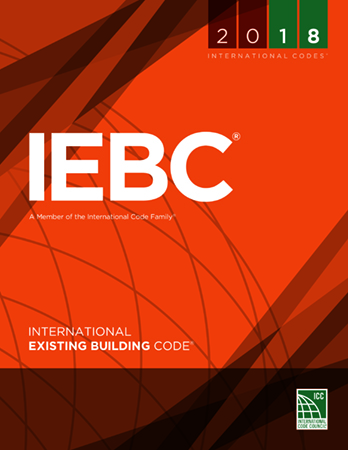 Section 410 Accessibility has been relocated to a new Section 305. Chapters 4, 5, 6, 13 and 14 have been relocated resulting in a reorganization and new chapter numbering.
Section 410 Accessibility has been relocated to a new Section 305. Chapters 4, 5, 6, 13 and 14 have been relocated resulting in a reorganization and new chapter numbering.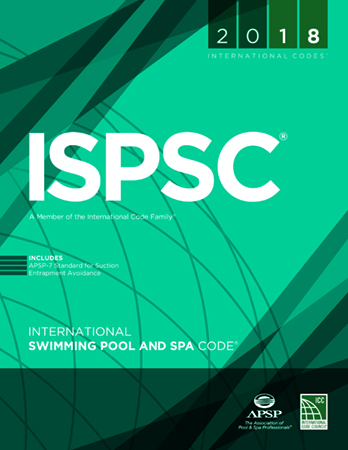 It was clarified that flotation tank systems for sensory deprivation therapy are not within the scope of the ISPSC.
It was clarified that flotation tank systems for sensory deprivation therapy are not within the scope of the ISPSC.